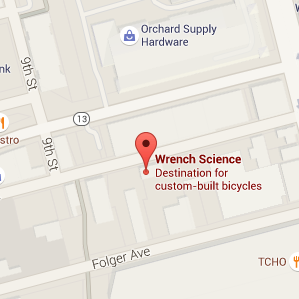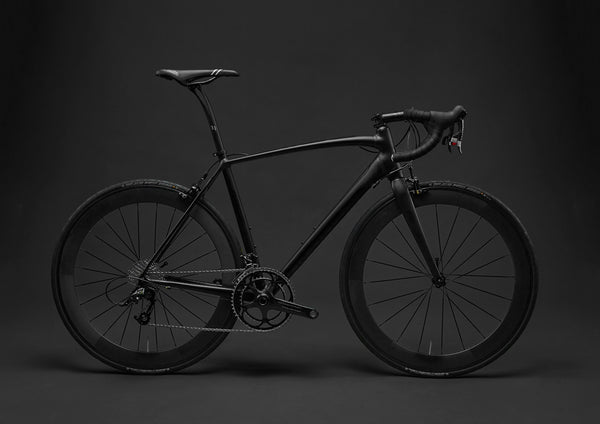If you are looking to buy a new bike or even perhaps trying to optimize the fit of your current frame, it’ll be important to understand what is bike geometry and how bike geometry affects handling.
Since most manufacturers provide geometry charts for all their frames, you don’t necessarily need to know how to measure bike geometry, but you will want to ask yourself what bike geometry do I need and know how the various measurements will affect how the bike handles and whether it will be appropriate for your size and riding needs. These tools for bike geometry comparison will make shopping for a new bike much less complicated.
Road bike geometry
Different types of road bikes will have geometries that focus on whichever style of riding they are intended to do. The most common design focus categories are racing and endurance with subcategories like bikes focusing on climbing and aero performance.
There inevitably will be a little blurring of the lines between categories. When we say “racing bike” we are referring particularly to the bikes that are designed to be ridden by professionals and amateur cyclists looking to compete and test themselves. Bikes like the Pinarello Dogma line and the top-of-the-line Colnagos. These are bikes that will have what is called a very aggressive geometry intended to help the rider get into an aerodynamic position that will still be comfortable enough to allow the rider to put out the best power possible.
Geometry that is racing-oriented will have a longer reach and low stack, and encourage the rider to spend a lot of time in the handlebar drops which will be both more aero and while allowing for greater control. How low and aero you can go with your geometry will depend on how flexible you are, and whether you will be focusing on your performance in racing situations.
For riders more concerned with maximizing their long distance riding, an endurance-oriented bike with less aggressive geometry numbers will be more appropriate. Oftentimes these types of bikes will have a higher stack and shorter reach that will allow the rider to sit in a more upright position, which will be more comfortable over the course of many hours in the saddle.

Lightweight or aero?
Whether a bike is intended to be a lightweight climbing bike or aerodynamic racing bike will also impact the types of decisions designers will make when settling on the frame geometry. For instance, a climbing bike will frequently have the type of geometry that will enhance its snappiness when climbing out of the saddle, things like steeper seat angles and shorter chainstays to make sure acceleration is instantaneous.
Similarly, making bikes as aero as possible will often require tweaks to the geometry. It can’t be considered an aerodynamic design without lowered seat stays that hit well down on the seat tube. The head tube will also most likely be shorter to encourage a super low aerodynamic position for the rider.
Tire width has also become important when looking at aerodynamics for road bikes, since wider tires on wider rims can provide improved aero drag as well as comfort. Ten years ago, there would be hardly room for 25 mm tires in road frame designs. With the advent of disc brakes and the science behind wider tires offering improved performance, nearly all the frame manufacturers have adapted their designs to accommodate wider tires. Now modern racing bikes are being designed to accommodate up to 32 mm or even 35 mm tires.
Gravel bikes - What bike geometry do I need?
Though gravel bike designs range from race to ultra-endurance to singletrack capability, the properties behind the geometry choices will be similar to road bikes. That means that you’ll get familiarly aggressive geometries for gravel bikes that are intended to be raced in the biggest gravel events such as Unbound and Mid South. For those bikes that are more intended for adventure riding and bikepacking, you’ll find much more relaxed geometry numbers with slacker angles, higher stack and shorter reach for comfort.
Obviously tire width with gravel bikes will also have an impact on how the frame is designed. Wider tires mean that it makes it harder to have the rear end of the frame as tight as racing bikes usually have it. The chainstays often have to be longer to accommodate the wider rubber. One solution has been to use a dropped chainstay or even double dropped chainstays to get the snappiness a race gravel bike wants without sacrificing tire width.
It’s one reason many gravel frames don’t come in as small of sizes as road frames can since smaller frames make wider tires much more complicated. For instance, companies like 3T have started to introduce smaller gravel frames thanks to the use of the double dropped chainstay.
Mountain bike geometry
Most mountain bike manufacturers in recent years have all gone in the direction of longer and slacker geometry and paired that with shorter stem lengths. The idea is to enhance stability and control especially for descending on rough surfaces. Whether you are looking for an XC racing bike or burly downhill mountain bike, the philosophy will be similar. XC bikes will have slightly more aggressive geometry to help with climbing and accelerating on technical courses. But overall, capability is the name of the game, and being able to handle singletrack and serious mountain trails is the goal of most mountain bike designs.
What to look for when studying geometry charts
Once you have decided which riding style is for you, you need to study geometry charts to find the right match. So, what should you look for?
First indicators that will give you a good idea of whether a certain frame will fit your riding style, are the reach and stack.
You’ve probably seen those terms but maybe wondered what they are measuring. Reach is the horizontal distance from the middle of the bottom bracket to the midpoint of the top of the head tube. The stack is the vertical distance from the middle of the bottom bracket to the midpoint of the top of the head tube.
When looking at these numbers, keep in mind what the head tube length is as well. Shorter head tubes will necessarily put you in a more aggressive position since it will typically increase the drop from the saddle height to the handlebars. If you don’t want too steep a drop, you can always add a couple of spacers, but you’ll want to avoid adding too many, since that will impact the quality of the handling. Too many spacers can introduce unwanted flex in the front end.

How bike geometry affects handling? The interaction of the head tube angle, trail, and rake
Once you have an idea of what reach and stack numbers generally suit you and your riding style, the next number we always look at is the head tube angle. Measured using a virtual line running down the center of the fork steerer tube, it is essentially the angle between the fork and the ground.
It is one of the most important measurements to indicate how the bike will handle, but it is complicated. Typically, the steeper head tube angle will be more responsive handling while slacker angles will feel more stable and slower to respond. It takes a very few degrees of difference to make a big impact on the way the bike will handle.
However, head tube angle is just part of that story. The trail and rake of the front wheel are two linked measurements that will be an important indication of what type of handling the frame will offer. Trail is the distance between where the tire hits the ground and the point where the measured line through the center of the head tube would hit the ground. A bike’s rake (sometimes called fork offset) is the distance between the front wheel’s axle and steering axis, which is a line drawn through the center of the head tube to the ground.
The trail is a result of the head tube angle, fork rake, and wheel/tire size. The smaller the rake the longer the trail. Longer trail and a slacker head tube angle will make the bike feel much more stable and the wheel will feel more planted in its line. It’s what you’ll find on gravel bikes and mountain bikes where the assumption is you’ll be riding these bikes on rougher roads and trails.
For racing bikes, you will typically find steeper head tube angles, bigger rake and shorter trail because the aim will be to have snappy, responsive handling. That’s usually what we are talking about when we write “aggressive handling”. Keep in mind, though, that things like stem length, tire size, and even handlebar width will impact how the bike handles.
The other important angle measurement for any frame is the seat tube angle. The angle of the seat tube relative to the ground, the seat tube angle impacts where the rider’s position on the bike, and is a major consideration when looking at bike fit. Again, slacker angles are used more commonly with endurance-oriented frames because it allows the body to be in a more upright, comfortable position. Steeper angles are seen on more performance-oriented racing bikes.
Finally, we should start looking at things like top tube length, effective and real depending on how sloping the top tube is. Though measurements like the reach have already addressed a lot of what the top tube length can tell you, it is important to know what your preferred top tube length is because it will help you find the right match for your preferred stem length as well, which will impact how quick the handling will feel.
Similarly, chainstay length and wheelbase will help give you an idea of how responsive the frame should be: shorter chainstays will indicate a snappier ride while longer chainstays and, consequently, wheelbase should point to a very stable bike especially on descents, though it might feel slow in handling.
Bike geometry - Summary
It is important to keep in mind when making bike geometry comparisons that these measurements are interacting with each other; change one measurement and it will impact the ride quality and way the bike handles. Familiarizing yourself with how the measurements interact will help you narrow down the choices of bikes you are looking for, especially if a test ride is not possible.



































































































































































































































































